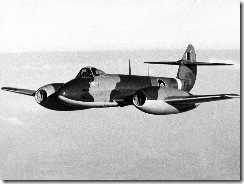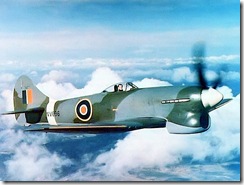The Performance Paradox
These two aircraft originally entered service a few months apart in 1944. Which would you suppose to be the fastest?
Surprisingly it is the one on the right, the piston-engined Hawker Tempest, which was 20 m.p.h faster than the first variant of the jet-engined Gloster Meteor. Within a few years, however, later variants of the Meteor were half as fast again, easily outstripping the fastest piston-engined aircraft
 This is in an example of one of the principle paradoxes at the heart of The Performance Paradox a book about the management of performance. New technology, new ways of doing things, even new procedures open up the possibility of a huge improvements in performance: but when first introduced, may underperform compared with the old.
This is in an example of one of the principle paradoxes at the heart of The Performance Paradox a book about the management of performance. New technology, new ways of doing things, even new procedures open up the possibility of a huge improvements in performance: but when first introduced, may underperform compared with the old.
It is of course easy to use this observation as a smokescreen to hide failed initiatives: but nonetheless real advances may produce a temporary dip in performance management metrics. It’s a useful insight when trying to understand the reason for a reduction in performance where you had expected an improvement.




May 4th, 2009 at 11:09 pm
Absolutely right! To quote Kuhn – a Paradigm shift.
The Meteor was a dog!
* centrifugal-flow compressor turbines fat and draggy, slow to spool up, and would be overtaken by axial-flow turbine designs, but was reliable and could be produced quickly in volume – German axial flow turbines of that period had a 20 *hour* scrap life
* air inlet too small to allow sufficient mass air flow to turbines to develop full power on early model Meteors
* wing was too thick, and hit compressibility issues and restricted altitude.
* directional stability was poor on early versions.
But it was a stepping stone to the Jet Age.
The Tempest was State of the Art of 10 years development from the Hurricane – hugely powerful (but very complex and unreliable) turbo-boosted piston engine, thin wing, good high altitude performace. It was only surpassed by it’s derivative, the Fury (which is still raced today), but that really was the end of the line for piston fighters.